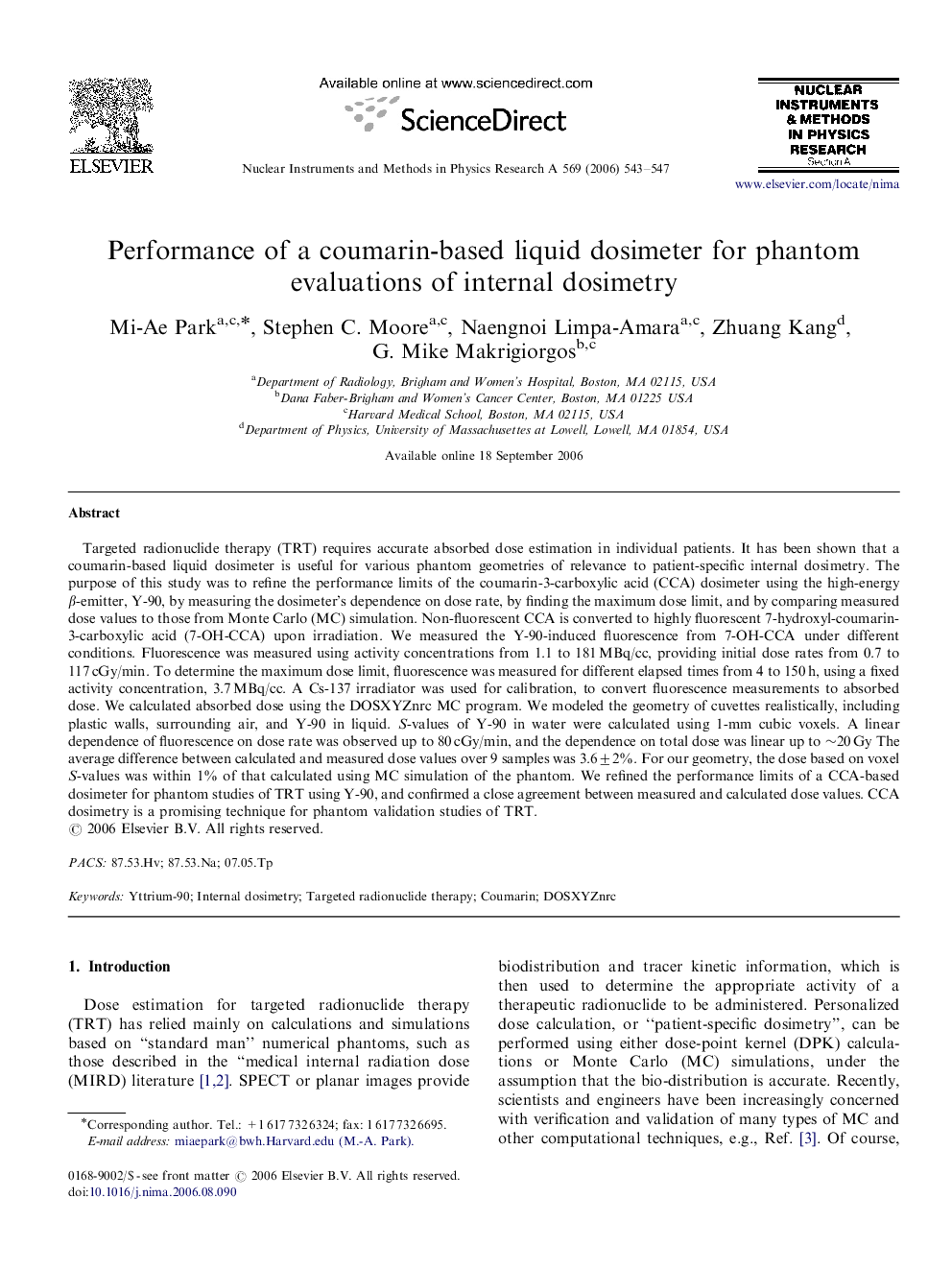| Article ID | Journal | Published Year | Pages | File Type |
|---|---|---|---|---|
| 1832374 | Nuclear Instruments and Methods in Physics Research Section A: Accelerators, Spectrometers, Detectors and Associated Equipment | 2006 | 5 Pages |
Abstract
Targeted radionuclide therapy (TRT) requires accurate absorbed dose estimation in individual patients. It has been shown that a coumarin-based liquid dosimeter is useful for various phantom geometries of relevance to patient-specific internal dosimetry. The purpose of this study was to refine the performance limits of the coumarin-3-carboxylic acid (CCA) dosimeter using the high-energy β-emitter, Y-90, by measuring the dosimeter's dependence on dose rate, by finding the maximum dose limit, and by comparing measured dose values to those from Monte Carlo (MC) simulation. Non-fluorescent CCA is converted to highly fluorescent 7-hydroxyl-coumarin-3-carboxylic acid (7-OH-CCA) upon irradiation. We measured the Y-90-induced fluorescence from 7-OH-CCA under different conditions. Fluorescence was measured using activity concentrations from 1.1 to 181 MBq/cc, providing initial dose rates from 0.7 to 117 cGy/min. To determine the maximum dose limit, fluorescence was measured for different elapsed times from 4 to 150 h, using a fixed activity concentration, 3.7 MBq/cc. A Cs-137 irradiator was used for calibration, to convert fluorescence measurements to absorbed dose. We calculated absorbed dose using the DOSXYZnrc MC program. We modeled the geometry of cuvettes realistically, including plastic walls, surrounding air, and Y-90 in liquid. S-values of Y-90 in water were calculated using 1-mm cubic voxels. A linear dependence of fluorescence on dose rate was observed up to 80 cGy/min, and the dependence on total dose was linear up to â¼20 Gy The average difference between calculated and measured dose values over 9 samples was 3.6±2%. For our geometry, the dose based on voxel S-values was within 1% of that calculated using MC simulation of the phantom. We refined the performance limits of a CCA-based dosimeter for phantom studies of TRT using Y-90, and confirmed a close agreement between measured and calculated dose values. CCA dosimetry is a promising technique for phantom validation studies of TRT.
Related Topics
Physical Sciences and Engineering
Physics and Astronomy
Instrumentation
Authors
Mi-Ae Park, Stephen C. Moore, Naengnoi Limpa-Amara, Zhuang Kang, G. Mike Makrigiorgos,
